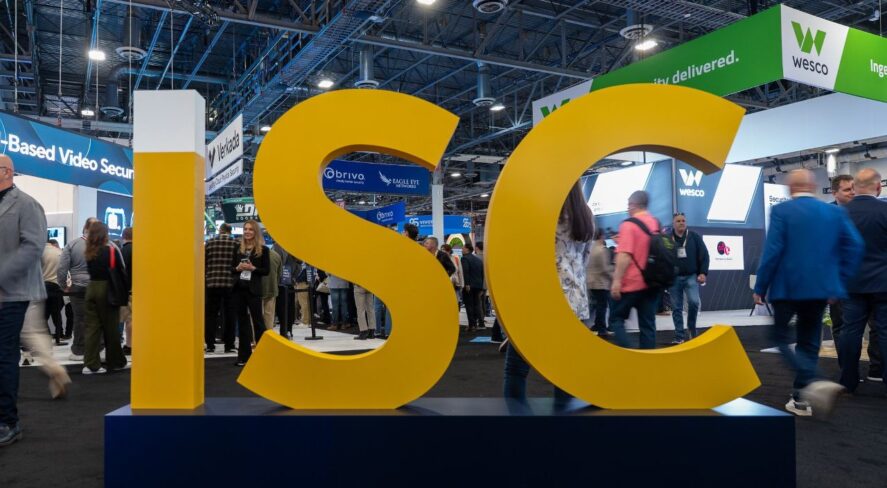Around the CAB: Cybersecurity Advisory Board Members Share Highlights From ISC West

As we head into summer, the Security Industry Association (SIA) Cybersecurity Advisory Board is looking back at ISC West, North America’s largest converged security event.
A topic that was top of mind at ISC West in 2025 was artificial intelligence. AI is rapidly growing across industries, being used for operational improvements and security capabilities. Despite its benefits, AI remains vulnerable and needs to be secured. At ISC West, SIA’s Cybersecurity Advisory Board led sessions on best practices, hacking, product security and zero trust.
Cybersecurity has become a crucial part of any security deployment. Here, members of the SIA Cybersecurity Advisory Board share key takeaways and insights from this year’s ISC West conference and show.
Will Knehr, Global Cybersecurity Advisor, i-PRO Americas:
At ISC West 2025, I had the opportunity to deliver two well-attended educational sessions as part of SIA’s cybersecurity track. The first, “Cybersecurity 101: IoT Best Practices,” focused on foundational defense principles for integrators and product developers working in Internet of Things and industrial IoT environments. We explored everything from secure configuration and firmware management to regulatory trends and emerging technologies like quantum computing and AI.
The second session, “Exploiting AI: Harnessing Advanced Tools for Ethical Hacking and Cyber Defense,” took a hands-on approach to demonstrating how AI is being used by attackers and defenders alike, covering AI-generated phishing, deepfakes, reconnaissance automation, polymorphic malware and anomaly-based detection strategies. The response was highly engaged, with many participants eager to explore practical applications of open-source AI tools in their cybersecurity workflows.
Beyond the classroom, one of the highlights for me this year was The Interface, a dynamic, debate-style event hosted by SIA where I squared off with Adam Lowenstein of i-PRO Americas on the future of AI in physical security. The conversations that followed were equally insightful, especially as we explored how credentials, identity and automation will shape the next phase of the industry.
From hallway conversations to live demonstrations, ISC West made it clear that the convergence of AI, cybersecurity, and physical systems is accelerating, and SIA is at the forefront of helping security professionals prepare. I’m grateful to have represented the Cybersecurity Advisory Board in these discussions and look forward to building on this momentum.

Teresa Wu, Vice President, Smart Credentials and Digital, IDEMIA North America:
ISC West 2025 put emphasis on providing cybersecurity insights through the SIA Education@ISC program. Rachel Wilson’s keynote on Day 1 of the conference, “The New Cyberthreat Landscape”, set a compelling tone, detailing how generative AI-fueled cyberattacks – s uch as advanced ransomware and phishing – require innovative, proactive defenses.
Sessions like “Two Worlds Colliding: How to Prevent Cyber-Physical Attacks” emphasized integrating IT and physical security to counter converging threats, while the RSA @ISC: IT for Security Professionals track offered practical tools like Cybersecurity 101 to align teams. These sessions shows that it is critical to continuously enhance our organization’s physical and digital security posture to combat AI-driven cyberthreats.
As a speaker, I presented “Why is Remote Identity Proofing a Game Changer for Zero Trust Deployment, Employee Onboarding, and Visitor Management?”, where I demonstrated how remote identity proofing bolsters cyber-physical security by strengthening employee on-boarding, the issuance of enterprise access credentials and the account recovery processes. I introduced the key technology concepts around identity proofing on document authentication and biometric liveness detection and verification. Identity is a pillar of zero-trust frameworks, and it is key to both physical and cybersecurity.
In “Navigating the Responsible Adoption of AI Biometrics: An Alternative Framework for Algorithm Selection”, I introduced a framework for selecting secure, ethical AI biometric algorithms, equipping organizations to counter AI-driven threats while ensuring trust. To stay ahead of cybercriminals exploiting generative AI, organization needs for AI technology will expand. Therefore, adopting AI technology in a responsible way while managing risks and mitigating bias is essential and cannot be overlooked.

Rachelle Loyear, Vice President of Integrated Security Solutions, Allied Universal:
I had the opportunity to speak on two panels that tackled challenges every security leader faces: understanding the true value of security solutions and communicating that value in a way that resonates with the business.
In “The Art of Telling Your Security Story: From Invisible to Invaluable with ESRM,” I teamed up with Tim McCreight of TaleCraft Security to explore how security can shift from being seen as just a cost center to a valued strategic partner. We shared practical ways to use the enterprise security risk management framework to align security efforts with business priorities – and, most importantly, how to tell that story in language executives actually care about.
Later that afternoon, I joined James Marcella of Axis Communications and Jeff Cox of Public Storage for “Security Risk and Return on Investment: Are You Looking at Just the Tip of the Iceberg?” – a conversation about making the case for security through risk-informed return on investment. We talked about how to look beyond surface-level cost and quantify the real business impact of security investments (and the consequences of underinvesting).
